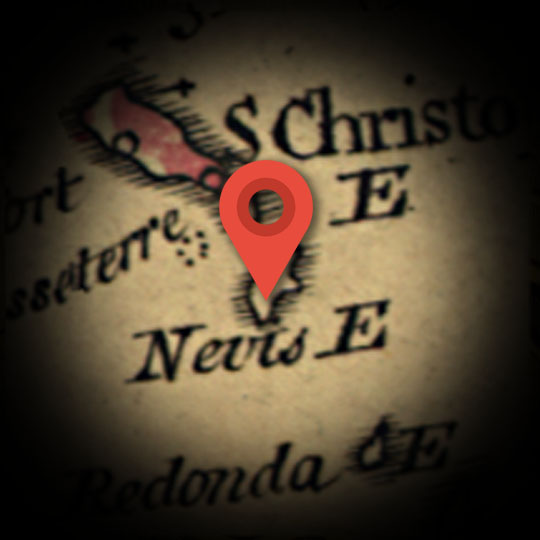NEVIS
Explore
The island of Nevis—a small, tropical land mass within the island chain still sometimes referred to as the “West Indies”—is the shared birthplace of Alexander Hamilton, his mother Rachel Faucette Lavien, and his older brother, James Hamilton Jr.
Nevis had been populated by the Arawak and Kalinago peoples before Spanish explorers reached the island in the late 1400s. First contact would prove to be a disaster to these indigenous inhabitants. Disease, enslavement, and violence rapidly decreased their population. It would never recover.
European sailors would continue to visit Nevis and forage for resources in the decades to come. Surrounding islands had proved to become engines of great wealth when colonized for the production of sugar using enslaved labor from Africa.
In step with the other, competing European powers that were colonizing Caribbean lands in the 17th and 18th Centuries, the British asserted control over Nevis in 1620. The number of plantations and inhabitants increased, and by the time Alexander Hamilton entered the world, the island was governed by a small, white elite, numbering in the hundreds, with many times that number forced into slave labor under harsh and often fatal conditions.
What year was Alexander Hamilton born? Either 1755 or 1757, it seems. There is still no precise consensus. The records are inconclusive and incomplete. Furthermore, it may have been Hamilton’s purposeful choice to obscure his age, seeking to gain advantages in social mobility by appearing older.
Alexander Hamilton and most other white residents of Nevis were considered British subjects. They took pride in being part of what they considered the freest, most enterprising, and powerful society in the entire world.
Hamilton and his family are understood to have lived in Nevis’s small capital settlement, Charlestown, before moving to the island of St. Croix around 1765.

TIME FRAME:
circa 1757-1765
